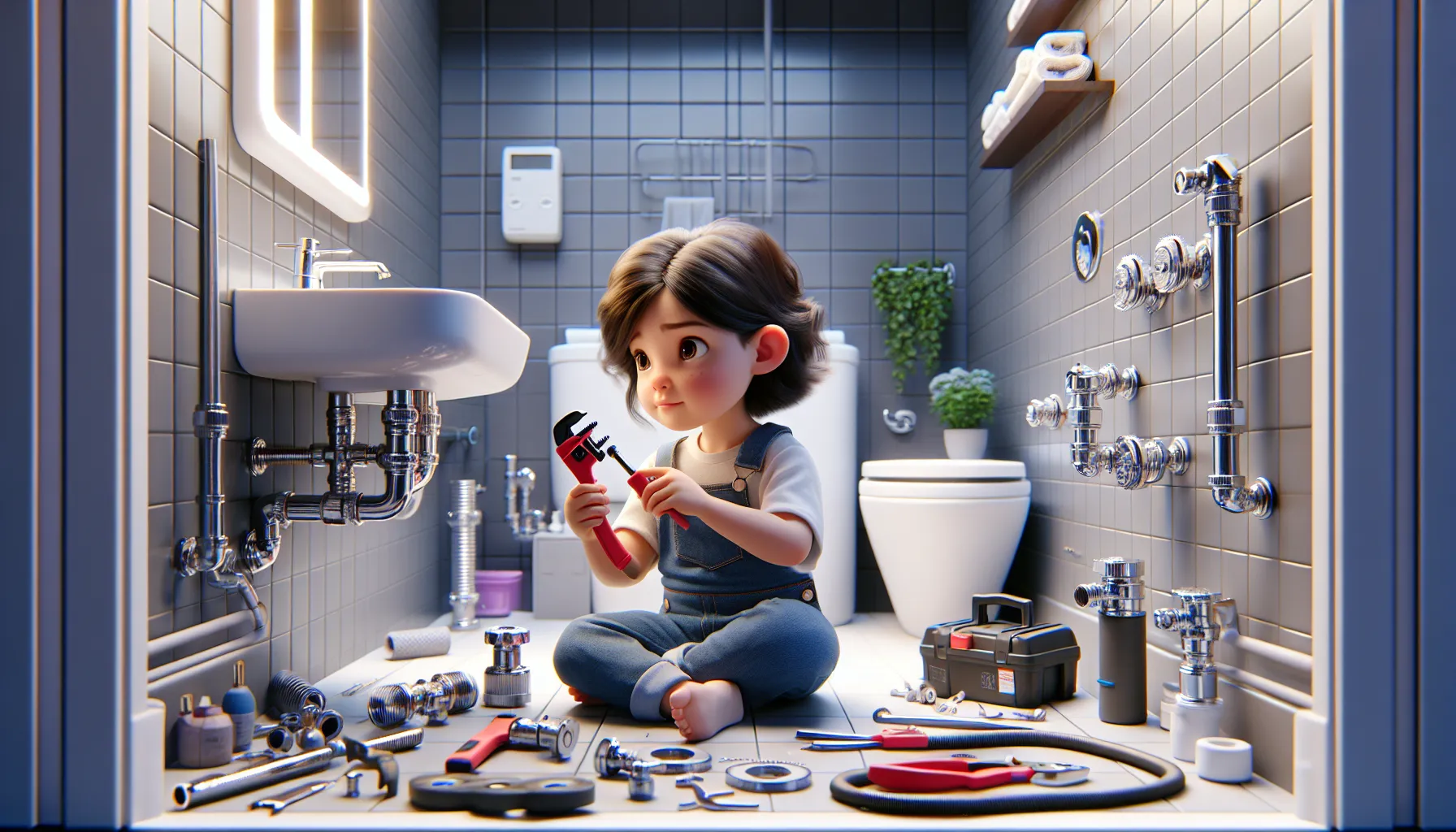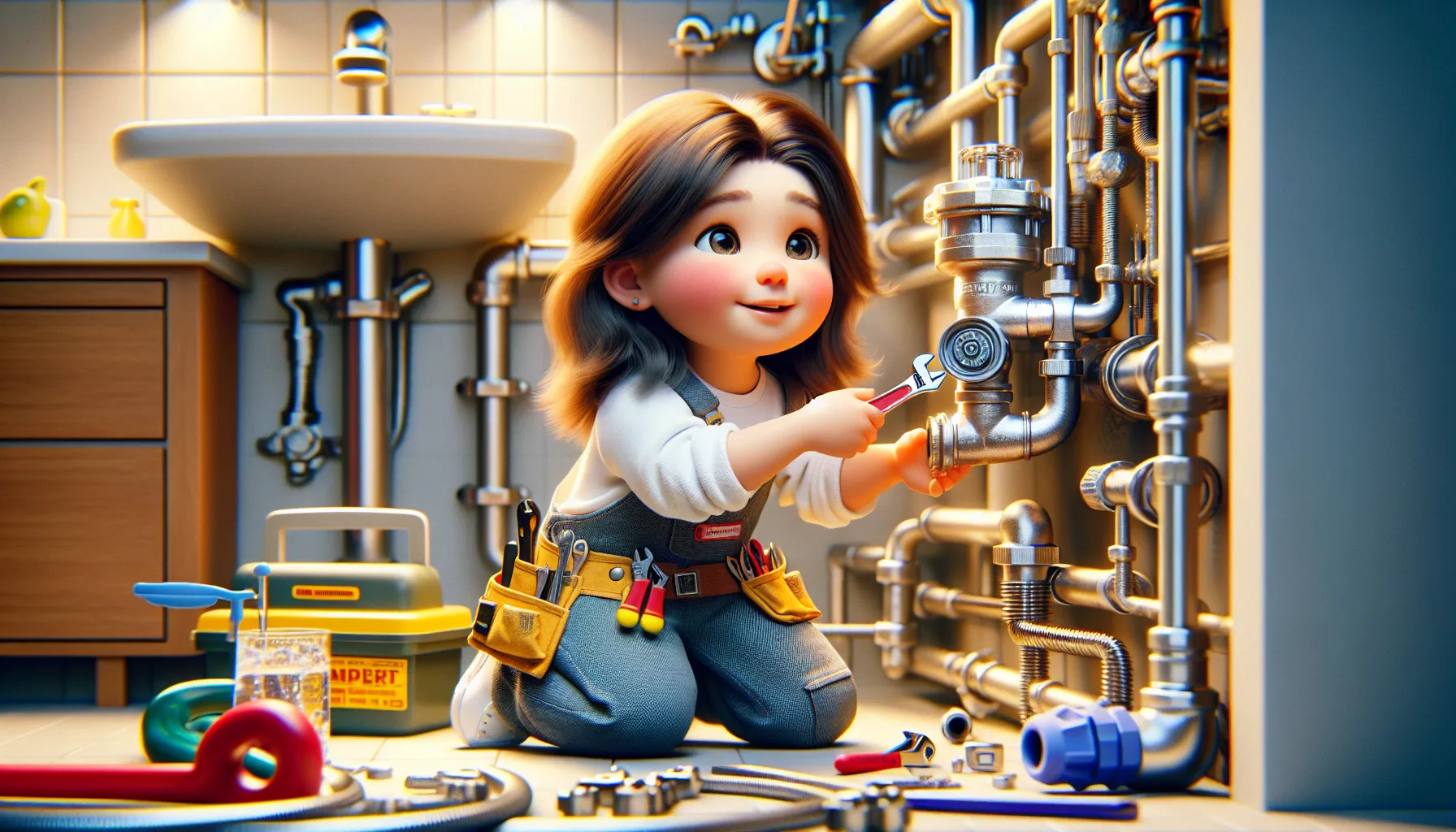Most homeowners may face the daunting task of needing to repipe their home’s plumbing at some point. Whether it’s due to old, corroded pipes causing leaks or poor water quality, repiping is a significant project that requires careful planning and execution. In this guide, we will walk you through the necessary steps to successfully repipe your home, ensuring a safe and efficient plumbing system for years to come.
Key Takeaways:
- Assess your home’s piping system: Before repiping your home, assess the current condition of your pipes to determine if repiping is necessary.
- Hire a professional: Repiping is a complex task that requires the expertise of a licensed plumber to ensure proper installation and functionality.
- Choose the right piping material: Select a durable and long-lasting piping material such as copper, PEX, or CPVC for your repiping project.
- Plan for the future: Consider the long-term benefits of repiping, such as improved water quality, increased home value, and reduced risk of leaks and pipe damage.
- Follow local building codes: Make sure your repiping project complies with local building codes and obtain any necessary permits before beginning the work.
Preparing for Repiping
Little do homeowners realize the importance of proper preparation before entering into a major repiping project. Taking the time to assess your home’s current plumbing system, determining the scope of the project, and selecting the right materials are crucial steps to ensure a successful repiping endeavor.
Evaluating Your Home’s Plumbing System
Any repiping project should start with a thorough evaluation of your home’s existing plumbing system. Look for signs of corrosion, leaks, low water pressure, or discoloration in your water. Pay attention to any unusual odors or noises coming from your pipes. Identifying these issues will help you understand the extent of the problem and what needs to be addressed during the repiping process.
Determining the Scope of the Project
Assuming the scope of your repiping project will depend on the size of your home, the age of your current pipes, and the severity of any existing issues. It’s important to consider whether you need to replace all the pipes in your home or if only certain sections need attention. Consulting with a professional plumber can help you assess the scope of the project accurately and plan accordingly.
This leads us to the crucial step of deciding on the right materials for your repiping project.
Choosing the Right Materials for Repiping
This crucial step involves selecting the appropriate materials for your repiping project. Two of the most common options are copper and PEX (cross-linked polyethylene). Copper pipes are known for their durability and resistance to high temperatures, making them a popular choice for many homeowners. On the other hand, PEX pipes are flexible, cost-effective, and easy to install, making them a convenient option for repiping projects.
Even though PEX pipes are gaining popularity in the world of repiping, it’s important to weigh the pros and cons of each material before making a decision. Factors such as cost, longevity, and local building codes should all be taken into consideration when choosing the right materials for your repiping project.
Financial Considerations
Estimating Costs and Budgeting for Repiping
All homeowners considering a repiping project should start by estimating costs and creating a budget to ensure they are financially prepared for the undertaking. Repiping costs can vary significantly depending on the size of the home, the type of pipes being replaced, and the extent of the work needed. It’s crucial to factor in not just the cost of materials and labor but also any potential repairs or damages that may arise during the process. Researching local plumbing companies and obtaining multiple quotes can help give you a more accurate idea of the overall costs involved.
Options for Financing Your Repiping Project
An important step in the repiping process is to consider options for financing the project. Some homeowners may choose to pay for the repiping project out of pocket if they have the financial means to do so. However, for those who may not have the funds readily available, there are other financing options available, such as home equity loans, personal loans, or financing plans offered by plumbing companies. It’s necessary to explore these options carefully and choose the one that best fits your financial situation and long-term goals.
Planning Your Repiping Project
Despite the disruption it may cause, repiping your home is a necessary project to ensure your plumbing system is functioning efficiently and to prevent potential water damage. Proper planning is crucial to the success of your repiping project.
Selecting a Qualified Plumbing Contractor
With a project as complex as repiping your home, it is necessary to hire a qualified plumbing contractor with experience in repiping projects. Look for professionals who are licensed, insured, and have a good reputation in the industry. A skilled contractor will be able to assess your home’s plumbing system accurately, recommend the best materials for the job, and complete the project efficiently.
The Importance of Obtaining Permits
Your repiping project may require permits from your local building authority. Permits ensure that the work is done according to code and safety regulations. Additionally, having proper permits can protect you from liability issues in case of any mishaps during or after the project. It is crucial to work with your contractor to obtain all necessary permits before starting the repiping project.
Planning is key when it comes to obtaining permits for your repiping project. Make sure to factor in the time it takes to get permits and approvals into your overall project timeline to avoid delays.
Timelines and Scheduling for Minimal Disruption
Timelines and scheduling play a critical role in minimizing disruption during your repiping project. Work with your contractor to create a detailed timeline that outlines the different stages of the repiping process, from inspection to completion. Be prepared for some inconvenience during the project, but a well-planned schedule can help reduce the impact on your daily routine.
Another important aspect to consider is coordinating with your contractor to schedule the repiping project during a time when it will least disrupt your household. This could mean planning around vacations or times when fewer occupants will be at home.
Executing the Repiping Process
Many homeowners find themselves facing the daunting task of repiping their homes due to old, damaged, or deteriorating pipes. This process involves replacing all the existing pipes in the house with new ones, ensuring a reliable and efficient plumbing system. Executing the repiping process requires careful planning, skilled professionals, and the right tools and materials.
Steps for Repiping Your Home
Any successful repiping project starts with a thorough inspection of your existing plumbing system to assess the scope of the work. Once the assessment is complete, the next step is to create a detailed plan outlining the areas that need repiping, the type of pipes to be used, and the estimated timeline for the project. After obtaining any necessary permits, the old pipes are removed, and the new pipes are installed according to the plan.
Tips for a Smooth and Efficient Repiping Project
While repiping your home can be a major undertaking, there are steps you can take to ensure a smooth and efficient project. First, hire a reputable and experienced plumbing contractor who specializes in repiping. Make sure to communicate openly with the contractor and discuss any concerns or preferences you may have. Additionally, consider the best time to schedule the repiping project to minimize disruptions to your daily routine.
- Plan ahead: Proper planning is crucial for a successful repiping project.
- Communicate clearly: Maintain open communication with your contractor throughout the process.
- Minimize disruptions: Schedule the repiping project at a time that is least disruptive to your household.
While repiping your home is a significant investment, it can improve the overall value and functionality of your property. By addressing any potential plumbing issues proactively, you can prevent costly repairs and water damage in the future. It’s imperative to work with a reliable plumbing professional who can guide you through the repiping process and ensure that the job is done correctly.
Understanding the importance of proper repiping can save you from potential disaster in the future. Old, corroded pipes can lead to leaks, water damage, and even mold growth in your home. By investing in repiping now, you can prevent these issues and enjoy a reliable plumbing system for years to come. Be mindful of, the key to a successful repiping project lies in careful planning, skilled professionals, and clear communication throughout the process.
Safety Measures During Repiping
Ensuring Safety for Inhabitants and Workers
To ensure the safety of both inhabitants and workers during the repiping process, it is crucial to take certain precautions. Not only should the work area be properly ventilated to prevent the accumulation of harmful fumes or gases, but protective gear such as goggles, gloves, and masks should also be worn at all times. It is important to not compromise on safety measures, as exposure to old pipes or contaminants can pose significant health risks.
Handling and Disposal of Old Pipes
Handling and disposing of old pipes is a critical aspect of the repiping process. Careful handling is vital to prevent injuries and exposure to harmful substances such as lead or asbestos. Pipes should be removed with caution and placed in designated containers for disposal. Disposal of old pipes should be done according to local regulations and guidelines to prevent environmental contamination. It is important to prioritize safety and follow proper procedures when handling and disposing of old pipes.
Post-Repiping Considerations
Quality Checks and Testing After Repiping
Unlike the initial inspection before repiping, post-repiping quality checks and testing are crucial to ensuring the success of the project. It is imperative to inspect all the newly installed pipes thoroughly for any leaks, corrosion, or other potential issues. Professional plumbers utilize various testing methods such as pressure testing to verify the integrity of the new piping system. This step is vital in preventing future water damage and ensuring the longevity of the repiping job.
Dealing with Wall Repairs and Cosmetic Touch-Ups
Assuming your home has undergone a repiping project, there is a high probability that there will be some level of wall damage or cosmetic imperfections left behind. Dealing with wall repairs and cosmetic touch-ups is an inevitable part of the post-repiping process. It is recommended to hire professional painters or contractors to patch up any holes, repaint walls, and restore the aesthetic appeal of your home.
For Dealing with Wall Repairs and Cosmetic Touch-Ups
Cosmetic imperfections left after repiping should not be overlooked as they can lead to further issues such as mold growth or structural damage. It is crucial to address these repairs promptly to maintain the overall quality and appearance of your home. Hiring professionals with experience in wall repairs and painting can ensure a seamless finish and help you enjoy the benefits of your newly repiped home.
Maintenance Tips for Your New Plumbing
Once again, congratulations on successfully repiping your home! Now, it’s necessary to ensure that your new plumbing system remains in top condition for years to come. Here are some maintenance tips to help you keep your pipes in excellent shape:
Regular Maintenance to Prolong the Life of Your Pipes
Some regular maintenance tasks can go a long way in prolonging the life of your pipes. One of the most important things you can do is to schedule annual inspections with a professional plumber. During these inspections, a plumber can spot any potential issues before they escalate into bigger problems.
Perceiving and fixing minor leaks, drips, or clogs promptly can save you from costly repairs down the line. Additionally, maintaining a consistent water pressure and avoiding excessive use of chemical drain cleaners can help prevent damage to your pipes.
Early Detection of Potential Problems
One of the best ways to prevent plumbing disasters is to detect potential problems early. Keep an eye out for warning signs such as slow drains, unusual noises, water stains on walls or ceilings, or a sudden increase in your water bill. Ignoring these signs can lead to more significant issues like burst pipes or water damage.
The key to maintaining a healthy plumbing system is to address any concerns promptly. Being proactive in identifying and resolving issues early can save you time, money, and stress in the long run.
Final Words
From above, repiping your home is a significant project that requires careful planning and execution. By following the steps outlined in this guide, you can ensure a successful repiping process that will improve the overall functionality and safety of your plumbing system. Remember to consult with a professional plumber to determine the best materials and approach for your specific home, and to minimize any potential disruptions during the repiping process.
With proper preparation and a reliable team of professionals, you can efficiently repipe your home and enjoy the benefits of a more reliable plumbing system for years to come. Keep in mind the importance of regular maintenance and inspections to prolong the lifespan of your new pipes, and address any issues that may arise promptly. By investing in repiping your home now, you can save yourself from costly repairs and potential water damage in the future.
FAQ
Q: Why should I consider repiping my home?
A: Repiping your home is necessary when your pipes are old, damaged, or causing frequent leaks. It can improve water quality, increase water pressure, and prevent potential water damage.
Q: How do I know if my home needs repiping?
A: Signs that indicate the need for repiping include low water pressure, rusty water, frequent leaks, and discolored water. If you notice these signs, it is recommended to consult a professional plumber for an inspection.
Q: What are the benefits of repiping my home?
A: Repiping your home can improve the overall water quality, increase the value of your property, prevent costly water damage repairs, and provide you with peace of mind knowing that your plumbing system is in good condition.
Q: How long does it take to repipe a home?
A: The time it takes to repipe a home depends on the size of the property, the complexity of the plumbing system, and any unforeseen issues that may arise during the process. On average, repiping a home can take anywhere from a few days to a week.
Q: What is the cost of repiping a home?
A: The cost of repiping a home varies depending on factors such as the size of the property, the type of pipes being used, and the complexity of the plumbing system. On average, the cost can range from $2,000 to $15,000. It is recommended to obtain quotes from multiple plumbing companies to compare prices.



